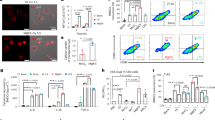Abstract
EXTRACTS from certain seeds of the Leguminosae are known to possess interesting biological properties. An extract of Phaseola vulgaris, phytohaemagglutinin (PHA), agglutinates red and white blood cells1,2 and tumour cells3, and indiscriminately stimulates blood lymphocytes cultured in vitro to undergo blastic transformation and increased mitogenic activity4. Since lymphocytes of a sensitized donor are known to be stimulated in the same manner when exposed to a previously encountered antigen5,6, the possibility of PHA being a universal antigen has been considered7. Recently it has been noted by ourselves and others8,9 that PHA likewise forms a precipitate indiscriminately with serum. Our demonstration of this ability of PHA to form a precipitin line with human serum and numerous animal sera appeared to support the concept of its being a ubiquitous antigen. If this were a valid concept, however, treatment of PHA to remove its precipitating activity would entail loss of antigenicity and might be expected to impair the lymphocyte-stimulating factor as well.
This is a preview of subscription content, access via your institution
Access options
Subscribe to this journal
Receive 51 print issues and online access
$199.00 per year
only $3.90 per issue
Buy this article
- Purchase on Springer Link
- Instant access to full article PDF
Prices may be subject to local taxes which are calculated during checkout
Similar content being viewed by others
References
Rigas, D. A., and Osgood, E. E., J. Biol. Chem., 212, 607 (1955).
Nungester, W. J., and Halsema, G. V., Proc. Soc. Exp. Biol. and Med., 83, 863 (1953).
Tunnis, M., J. Immunol., 92, 864 (1964).
Nowell, P. C., Cancer Res., 20, 462 (1960).
Pearmain, G., Lycette, R. R., and Fitzgerald, P. H., Lancet, i, 637 (1963).
Holland, P., and Mauer, A. M., Lancet, ii, 1368 (1964).
Lycette, R. R., and Pearmain, G. E., Lancet, ii, 386 (1963).
Nakamura, S., Tanaka, K., and Murakawa, S., Nature, 188, 144 (1960).
Beckman, L., Nature, 195, 582 (1962).
Boyden, S. V., J. Exp. Med., 93, 107 (1951).
Crowle, A. J., J. Lab. Clin. Med., 52, 784 (1958).
Author information
Authors and Affiliations
Rights and permissions
About this article
Cite this article
HOLLAND, N., HOLLAND, P. Haemagglutinating, Precipitating and Lymphocyte-stimulating Factors of Phytohaemagglutinin. Nature 207, 1307–1308 (1965). https://doi.org/10.1038/2071307a0
Issue Date:
DOI: https://doi.org/10.1038/2071307a0
This article is cited by
-
Isolation of the mitogenic components from phytohaemagglutinin
Klinische Wochenschrift (1972)
-
Isolation of the lymphoagglutinating fractions of phytohaemagglutinin (PHA) from phaseolus vulgaris and characterization of their biological properties
Klinische Wochenschrift (1971)
-
Phythämagglutinin (PHA) und Serumproteine in der Lymphocytenkultur
Zeitschrift für Die Gesamte Experimentelle Medizin einschließlich experimentelle Chirurgie (1970)
-
Untersuchungen zur humoralen Immunit�t bei Pyrrhocoris apterus L. und Galleria mellonella F.
Zeitschrift f�r Vergleichende Physiologie (1968)
Comments
By submitting a comment you agree to abide by our Terms and Community Guidelines. If you find something abusive or that does not comply with our terms or guidelines please flag it as inappropriate.



